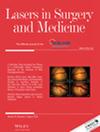Treatment of Acne With a 1726 nm Laser, Air Cooling, and Real-Time Temperature Monitoring, Software-Assisted Power Adjustment to Achieve a Temperature Endpoint With Selective Sebaceous Gland Photothermolysis
Abstract
Objectives
This work highlights the methods used to develop a multi-pulse 1726 nm laser system combined with bulk air-cooling for selective sebaceous gland (SG) photothermolysis using thermal imaging and software algorithms. This approach enables treating to a desired tissue temperature and depth to provide a safe, effective, reproducible, and durable treatment of acne.
Methods
We designed and built a 1726 nm laser system with a 40 W maximum power output, a highly controlled air-cooling device, and a thermal camera in the handpiece, which permits real-time temperature monitoring of the epidermis. IRB-approved safety and efficacy trials demonstrated SG damage at depth, resulting in safe, efficacious, and durable clinical outcomes. Bioheat transfer and light transport modeling confirmed that the pulsing protocols could produce therapeutic temperatures at various SG depths, while protecting the epidermis and dermis with bulk air-cooling. Similarly, we employed clinical observations and photothermal modeling to identify pain mitigation opportunities while maintaining therapeutic efficacy. Biopsies were subsequently taken for histological evaluation.
Results
Clinical and histological data, confirmed with modeling, demonstrated that multi-pulse laser delivery with bulk air-cooling selectively increased SG temperature compared to surrounding dermis and at depths unachievable by a single pulse. Subjects showed an average 71% ILC reduction at 3 months posttreatment. We identified two different pulsing protocols with similar selective photothermolysis (SP) of the SG with very different pain responses. Thus, changing the pulsing protocols allowed for pain mitigation and eliminated the need for injectable anesthetic. Histology confirmed the selective damaging of the SG at depth and the preservation of the surrounding dermis and the epidermis.
Conclusions
The multi-pulse 1726 nm laser with bulk air-cooling, thermal monitoring, treat-to-temperature (and depth) control, and a unique pulsing protocol, is capable of selectively damaging SGs at depth without damage to the surrounding dermis or the epidermis. The system offers two different protocols that were developed with different levels of discomfort allowing for two different methods for pain mitigation (injectable vs. topical anesthesia).

 求助内容:
求助内容: 应助结果提醒方式:
应助结果提醒方式:


